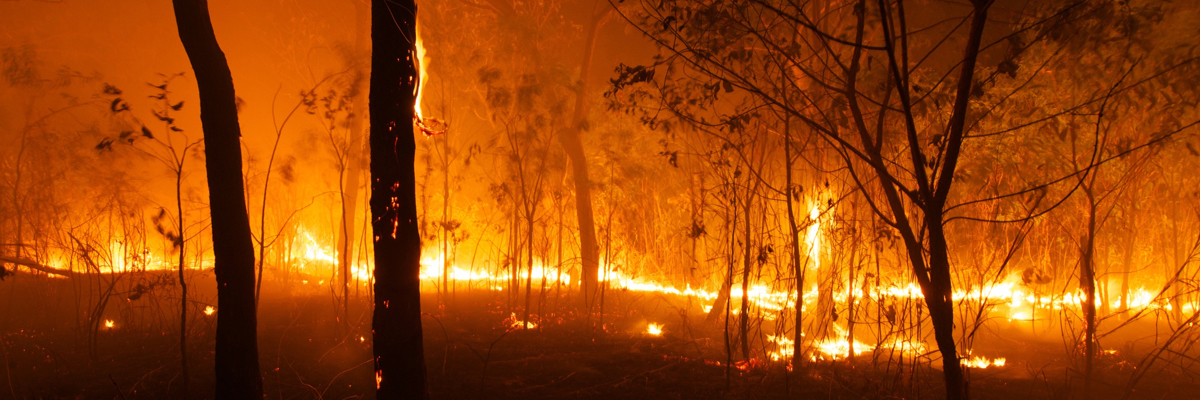BAL Report Principles: Crucial Details for Homeowner
BAL Report Principles: Crucial Details for Homeowner
Blog Article
Ensuring Shrub Fire Defense Via Correct BAL Record Analysis
In the realm of bush fire security, the precise analysis of Bushfire Strike Degree (BAL) records stands as a foundation for securing residential or commercial properties against the destructive effect of wildfires. With environmental elements and residential property features playing substantial duties in establishing the degree of danger, a detailed understanding of BAL rankings becomes crucial. Nevertheless, the genuine essence lies not just in comprehending these reports however in deciphering them effectively to formulate tailored fire protection strategies. By diving into the importance of BAL record analysis, we uncover a world where educated decisions lead the course towards strengthening residential or commercial property security and resilience in fire-prone regions.
Recognizing Bushfire Attack Level (BAL)
In the realm of bushfire security, understanding the Bushfire Assault Degree (BAL) is vital for making certain reliable reduction approaches. Recognizing the BAL rating of a residential property is vital for property owners, policymakers, and home builders to implement ideal steps to safeguard versus bushfire dangers.

Value of BAL Report Analysis
A vital element in bushfire security planning involves the comprehensive analysis of BAL reports to evaluate the potential risks and determine appropriate reduction approaches. BAL records give crucial details concerning the prospective effect of bushfires on a home based on various elements such as plant life kind, distance to possible fire hazards, and slope of the land. Analyzing these records with precision is paramount in establishing effective bushfire defense measures tailored to the certain danger account of a building.
Carrying Out Fire Defense Steps
Implementing effective fire security procedures is important for securing homes in bushfire-prone areas. Among the primary means to enhance fire defense is by creating defensible area around buildings. This includes clearing up flammable plant life, such as dry leaves and branches, within a specific span of the property. Additionally, installing fire-resistant roof covering materials can help in reducing the danger of ashes stiring up the roof covering during a bushfire. Appropriately kept rain gutters and displays are also necessary to prevent debris accumulation that can fuel a fire.
In addition, having a properly maintained and appropriate water supply, such find out here as a storage tank or swimming pool, can aid firemans in their efforts to protect the building. BAL Report. In general, implementing a mix of these fire protection procedures can significantly boost the chances of securing residential or commercial properties throughout bushfire events.
Mitigating Dangers in Fire-Prone Locations
To fortify buildings against bushfire dangers, a tactical emphasis on mitigating threats in fire-prone locations is essential. Mitigating risks in fire-prone locations involves an extensive approach that includes numerous measures to decrease the probability and influence of bushfires. One important aspect of risk reduction is maintaining defensible room around properties by clearing flammable plant life, guaranteeing sufficient spacing in between trees and frameworks, and employing fire-resistant landscape design techniques. In addition, implementing ember-proofing steps such as setting up steel mesh displays on home windows and covering roof covering dental caries can aid stop coal assaults and reduce the risk of place fires.
Moreover, building or retrofitting buildings with fireproof products and making sure appropriate maintenance of roofing systems, gutters, Look At This and exterior cladding can considerably enhance the home's durability to bushfires. Developing and practicing a bushfire emergency plan with all owners, consisting of emptying treatments and interaction techniques, is likewise vital in mitigating threats effectively. By taking on a proactive method to risk reduction in fire-prone areas, building owners can much better secure their assets and improve overall bushfire readiness.
Ensuring Building Safety And Security and Resilience
Ensuring the security and resilience of properties in fire-prone areas calls for a steadfast dedication to durable safety nets and strategic planning. Property security starts with implementing effective procedures to reduce fire risks. This consists of keeping a defensible space around the building by clearing combustible vegetation, making sure proper maintenance of rain gutters and roofs, and utilizing fireproof building products. Routine maintenance of firefighting tools, such as pipes and lawn sprinkler, is additionally critical to building resilience.
Durability, on the other hand, entails the ability of a home to recover and hold up against from a bushfire. By proactively dealing with these facets, residential property owners can better shield their assets and enjoyed ones from the threat of bushfires.
Final Thought
To conclude, making sure bushfire defense through appropriate BAL record analysis is vital for understanding the level of danger postured by bushfires and executing needed fire protection steps. By minimizing dangers in fire-prone locations and ensuring residential property safety and security and resilience, individuals and neighborhoods can much better prepare for and look at here now respond to bushfire events. It is essential to prioritize fire precaution to safeguard lives and home in these risky settings.
In the world of bush fire protection, the precise evaluation of Bushfire Strike Degree (BAL) records stands as a cornerstone for protecting buildings against the disastrous influence of wildfires (BAL Report). Understanding the BAL rating of a home is vital for property proprietors, policymakers, and builders to execute suitable procedures to guard versus bushfire hazards

BAL records offer critical information regarding the possible impact of bushfires on a residential property based on numerous factors such as plants kind, range to potential fire dangers, and slope of the land (BAL Report). On the whole, carrying out a mix of these fire protection actions can considerably raise the chances of securing homes during bushfire occasions
Report this page